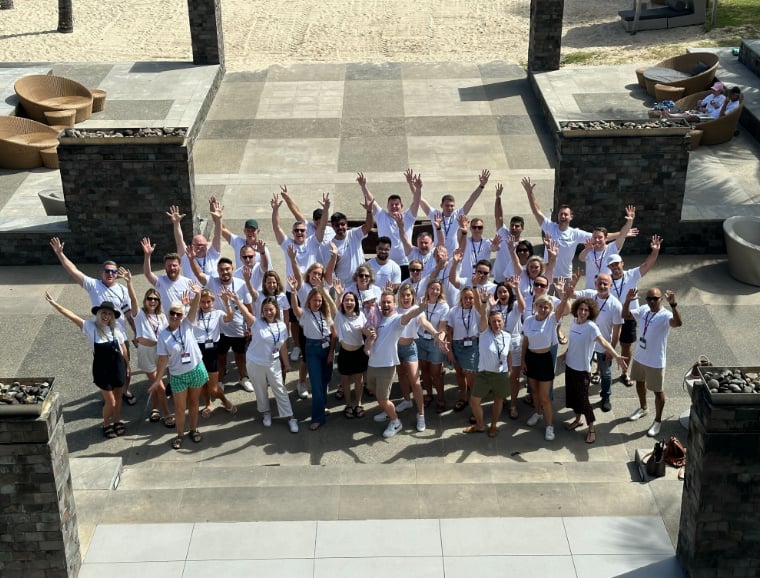In today’s fast-paced manufacturing world, staying ahead means embracing smarter, more efficient technologies. 3D scanning has emerged as a game-changer, allowing you to digitize physical assets with precision and ease. This innovative process not only enhances design and production but also streamlines workflows and reduces costly errors.
By integrating 3D scanning into your manufacturing strategy, you’ll unlock opportunities to optimize operations, improve product quality, and accelerate time-to-market. This article explores how digitizing physical assets with 3D scanning can revolutionize your approach, helping you stay competitive in an ever-evolving industry.
Understanding 3D Scanning Technology
3D scanner technology uses specialized equipment to capture the physical dimensions of objects and generate precise digital replicas. By employing sensors, lasers, or structured light, these systems measure the geometry of an object and convert that data into 3D models.
How 3D Scanning Works
- Data Collection: The scanning device emits light or uses cameras to measure an object's shape, surface, and texture accurately. For example, laser scanners project a beam onto the surface, while structured light scanners use patterns to analyze distance.
- Data Processing: Collected measurements are processed into point clouds—a set of data points in a three-dimensional coordinate system. These points represent the object's external surface.
- Model Reconstruction: Software converts the point cloud into a detailed 3D model, often using formats like STL, OBJ, or PLY for compatibility with CAD systems.
Each stage requires high precision to ensure the resulting digital designs maintain fidelity to the original physical object.
Types of 3D Scanners
- Contact Scanners: Use a probe to touch the object's surface, collecting measurements through physical interaction. Typically used in quality inspection for hard materials like metal or plastic components.
- Laser Scanners: Emit a laser to map the shape of an item. They're suited for scanning both large machinery and small, detailed components.
- Structured Light Scanners: Project light patterns and capture distortions caused by the object's surface. Commonly employed in engineering and product design.
Examples of Applications
- Reverse Engineering: Capturing outdated parts for redesign and production. For instance, digitizing spare machine parts no longer actively manufactured.
- Quality Control: Verifying that manufactured goods match design specifications. Accurate scans help identify deviations in dimensions or surface finish.
- Rapid Prototyping: Creating accurate digital assets for 3D printing prototypes. Designers can refine initial concepts efficiently.
Benefits Of Digitizing Physical Assets
Digitizing physical assets with 3D scanning introduces several advantages that contribute to smarter manufacturing practices. It fosters innovation, reduces inefficiencies, and enhances technological integration in production environments.
Enhanced Accuracy And Precision
Using 3D scanning, you can achieve high levels of detail that manual measurements lack. These scanners capture intricate geometries, creating digital models with tolerances as small as 0.001 inches. This level of precision reduces errors in product design and manufacturing processes.
Measurement consistency improves when scans are performed repeatedly, ensuring quality remains steady across multiple stages. For instance, aerospace manufacturers digitize critical parts, like turbine blades, to verify consistency in their dimensions, minimizing deviations.
Reverse engineering also benefits from this accuracy. By scanning obsolete or deformed parts, you can generate precise models to reproduce components without relying on outdated blueprints.
Improved Collaboration And Efficiency
Digital replicas facilitate clear communication between departments and external partners. You can share CAD-compatible 3D files easily, eliminating misunderstandings that occur with 2D plans.
Collaboration between designers and engineers is streamlined when everyone accesses identical models. This accelerates decision-making. For example, automotive companies share virtual prototypes globally, fast-tracking design revisions and market readiness.
Efficiency rises as digitized assets integrate into automation systems. Scans enable robotic programming, inspection systems, and CAM software to function faster and more reliably. Factories using smart systems to inspect parts during production reduce waste and improve throughput.
Applications In Smarter Manufacturing
Manufacturers incorporate 3D scanning into workflows to address inefficiencies, enhance precision, and digitize physical assets. Its applications demonstrate measurable value in modern production systems.
Streamlining Production Processes
Using 3D scanning, you can optimize workflows for production planning and component alignment. This technology allows you to integrate scanned data directly into CAD software, creating accurate models for manufacturing systems. With precise digital twins of physical parts, you reduce time spent on manual measurements.
For instance, die and mold manufacturers use scans to assess wear or deformities in tooling. By identifying wear patterns, you adapt processes before defects occur. Similarly, automotive parts production benefits from scanning components for compatibility within assembly lines.
Data from 3D scanning aids automation. Inputting geometric data into robotic systems improves machining accuracy. CNC machining workflows align scanned 3D models with cutting parameters, minimizing waste during material removal. This approach supports lean manufacturing goals by reducing resources consumed.
Quality Control And Inspection
3D scanning enhances inspection workflows by providing high-resolution dimensional data. Accurate point cloud data ensures that every surface measurement meets production tolerances. This is especially valuable in sectors like aerospace, where strict compliance matters.
Using handheld or fixed-position 3D scanners, you perform real-time inspections. Scans compare manufactured parts to CAD models, detecting deviations smaller than 0.1 mm. Operators verify structural integrity without destructive testing techniques.
Scanned models are useful for identifying inconsistencies in batch production. For example, turbine blades manufactured in series undergo 3D scanning to reveal subtle variations. These insights help you refine design parameters or identify tooling drift.
Detailed inspection reports generated from scanned data improve traceability. Archived digital scans act as benchmarks for future audits, ensuring consistent quality standards over long production runs.
Overcoming Challenges In 3D Scanning
Adopting 3D scanning isn't without obstacles. From technological constraints to safeguarding sensitive data, you encounter challenges that demand attention and effective strategies.
Addressing Technological Limitations
The precision of 3D scans often hinges on the type and quality of the scanner. Different devices excel in specific scenarios, leaving gaps when demands exceed their capabilities. For example, structured light scanners perform poorly on reflective or transparent surfaces, while laser scanners struggle with soft, moving objects. Selecting the right scanner to match material properties can minimize errors.
Environmental conditions, including lighting and temperature, can skew results. Industrial settings often require portable or handheld scanners to operate under variable conditions. However, these models might offer lower resolution compared to fixed-position systems used in controlled environments.
Processing large datasets presents another hurdle. Scans of intricate objects, particularly those with fine textures or minuscule features, generate massive point clouds that strain software and hardware. Optimizing your infrastructure, such as leveraging GPUs or cloud-based platforms, reduces the burden while maintaining accuracy.
Ensuring Data Security
Digitizing physical assets generates sensitive digital replicas. Unauthorized access to these files risks intellectual property theft or misuse. Safeguarding scanned data requires integrating encryption and user access controls. For example, storing 3D files in encrypted cloud services or local servers with role-based authentication restricts access to authorized personnel.
In collaborative projects, scanned models often move between organizations. Tracking file transfers and implementing end-to-end encryption adds a layer of protection. Blockchain protocols are increasingly explored for establishing tamper-proof records, though adoption remains limited.
Internal practices also play a role. Training employees on secure data handling minimizes accidental exposure risks, while regular audits identify potential vulnerabilities in storage or sharing workflows.
Future Trends In 3D Scanning For Manufacturing
Advancements in 3D scanning are reshaping manufacturing strategies. These innovations focus on improved efficiency, higher precision, and seamless integration with advanced technologies.
Integration of Artificial Intelligence
AI algorithms increasingly enhance 3D scanning functions. They automate data processing tasks like filtering, segmentation, and alignment, reducing manual input. One example is AI-powered defect detection, which identifies flaws in scanned data faster than traditional methods. By learning patterns from large datasets, AI improves the software's ability to predict and correct errors.
Greater Use of Automation
Merging 3D scanning with robotics creates automated inspection solutions. Robotic arms equipped with scanners can capture data from complex surfaces without human intervention. This trend is particularly visible in automotive manufacturing for routine quality checks, saving time and minimizing labor-intensive processes.
Portable and Wireless Scanners
Handheld scanners are becoming lighter and more versatile. Wireless connectivity enables real-time data transfer to cloud platforms, useful in situations where physical movement is limited. Manufacturing plants with space constraints benefit from portable devices that provide high-resolution scans on-site.
Higher Scan Resolutions and Speed
Manufacturers are demanding faster scanning without losing accuracy. Newer scanners claim micron-level resolution, ideal for industries like aerospace, where parts have intricate features. Faster scanning technologies accelerate reverse engineering and prototype generation, shortening development cycles.
Cloud Integration for Data Storage
Cloud computing makes storing and accessing 3D scan data easier. Centralized storage allows teams in different locations to collaborate without duplicating files. Companies adopting digital twins use cloud integration to update models in real-time, reflecting physical changes in assets.
Focus on Sustainability
Some manufacturers use 3D scanning to reduce waste. By analyzing scanned data, companies refine production methods to use materials efficiently—for instance, additive manufacturing benefits from accurate measurements, reducing material excess and energy use during production.
Adaptation for Additive Manufacturing
3D scanning optimizes additive manufacturing workflows. Scanned models directly feed into 3D printers, removing the need for additional CAD modifications. Industries creating custom parts, like healthcare, leverage this integration to design patient-specific components. 3DMakerPro supports this process by providing accessible, high-precision scanning solutions that streamline the journey from real-world object to printable model.
Questions for Consideration
- What industries might benefit most from AI-augmented scanning workflows?
- How could portable devices impact field maintenance procedures?
- What challenges might arise from large-scale cloud adoption in manufacturing?
Understanding these developments prepares you to adopt 3D scanning technologies effectively while keeping pace with innovation.
Embracing 3D scanning technology positions your manufacturing processes for greater precision, efficiency, and innovation. By digitizing physical assets, you unlock opportunities to streamline workflows, enhance quality control, and integrate advanced automation tools.
As the technology continues to evolve, staying informed and adaptable ensures you remain competitive in a fast-paced industry. With the right strategies and tools, you can leverage 3D scanning to drive smarter, more sustainable manufacturing practices that meet the demands of today and the future.
Related Categories
Ryan Terrey
As Director of Marketing at The Entourage, Ryan Terrey is primarily focused on driving growth for companies through lead generation strategies. With a strong background in SEO/SEM, PPC and CRO from working in Sympli and InfoTrack, Ryan not only helps The Entourage brand grow and reach our target audience through campaigns that are creative, insightful and analytically driven, but also that of our 6, 7 and 8 figure members' audiences too.





